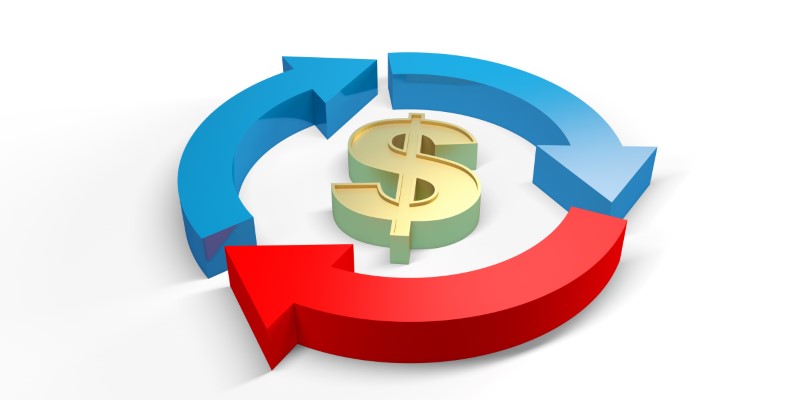Understanding the Allocation of Social Security and Medicare Taxes
For people who pay taxes, it's important to know where our contributions to Social Security and Medicare end up. These are the foundation of America's social safety net as they give money aid and health care help to many citizens. By knowing where our tax dollars go, we get insights about how these programs work and their importance in our lives.
The Basics of Social Security
Social Security was set up in the year 1935 and it plays a major role in the social safety net of America. It provides necessary financial help to people who are retired, those with disability as well as survivors from workers who have passed away. The program works by requiring contributions from both employees and employers, making sure there is enough money collected for benefits to be given out. Besides retirement benefits, Social Security has disability insurance too which gives important help when someone unexpectedly faces health problems or becomes disabled. Comprehending the scope of Social Security's coverage demonstrates its importance in protecting the financial stability of many Americans.
Social Security, showing its flexibility, has changed with time to match the needs of society. For example, adjustments made in the Social Security Act have broadened coverage for dependents like children and spouses; even divorced partners are included in some situations. Additionally, indexing Social Security to inflation makes sure benefits increase along with rising prices which helps maintain retirees and beneficiaries' ability to buy goods and services at current rates. This dedication to quickness highlights the ongoing importance of Social Security in maintaining monetary security for people and families over many years.
- Sustainability Measures: Regular evaluations ensure Social Security's fiscal health, prompting adjustments such as tax rate modifications or changes in benefit eligibility criteria to maintain long-term viability.
- Lifecycle Considerations: Social Security benefits are influenced by factors such as retirement age and earnings history, emphasizing the importance of strategic planning to maximize financial security during different life stages.
The Journey of Medicare Taxes
Medicare, which began in 1965, is a key part of healthcare for elderly people in America. It gives broad coverage that includes hospitalization and medical services as well as prescription drugs. Social Security, an important social program made up mainly to help retired or disabled persons, isn't the same thing. Medicare concentrates solely on giving healthcare benefits to those aged 65 and above. This federal program is funded by payroll taxes. This means there's always money coming in from workers' paychecks to support medical services provided under it.

Medicare, in addition to being the main provider of health care coverage, is also a key force in pushing forward preventive care and wellness actions. This program includes many services for prevention like screenings, vaccines, and visits focused on well-being. The goal is to identify problems with health at an early stage so they can be dealt with before they become serious. By giving importance to preventive care, Medicare helps improve health results and lessen healthcare expenses over time.
- Medicare Advantage Options: Beneficiaries have the option to enroll in Medicare Advantage plans offered by private insurers, providing additional coverage beyond traditional Medicare benefits.
- Income-Related Premiums: Higher-income beneficiaries may be subject to income-related premiums for Medicare Part B and Part D coverage, reflecting a progressive approach to financing healthcare services.
Allocation to Trust Funds
Money from workers and employers that is taken out as Social Security and Medicare taxes gets carefully separated into assigned trust funds so the handling and use of funds remain clear. These funds work like keepers for the contributions, making sure the financial safety of their related programs is maintained. In the Social Security system, money goes to separate trust funds like the Old-Age and Survivors Insurance (OASI) Trust Fund or Disability Insurance (DI) Trust Fund, each serving specific groups of recipients.
The Medicare taxes also go to special trust funds. These are the Hospital Insurance (HI) Trust Fund and the Supplementary Medical Insurance (SMI) Trust Fund. The separation of these funds helps in specifically setting aside money for hospital insurance benefits, medical services, and prescription drugs. By keeping distinct trust funds, Social Security along with Medicare make sure that financial management remains clear and responsible. This guarantees that contributions are used directly for those who qualify to receive them.
- Trust Fund Reserves: Regular assessments monitor the solvency of trust funds, with reserves serving as a buffer against fluctuations in revenue and expenditure.
- Actuarial Analysis: Actuarial projections inform policymakers about the long-term sustainability of trust funds, guiding strategic decisions to maintain program integrity.
Utilization for Benefits and Administration
The money put into the Social Security and Medicare trust funds is like a lifeline for many people, giving them important help with finances and healthcare services. A big part of this money goes to paying benefits to those who qualify. These benefits include retirement payments, disability benefits, and coverage for healthcare costs. This makes sure that people who are retired, have disabilities, or are enrolled in Medicare get assistance at the right time to cover their different requirements.
Apart from giving out benefits, funds are also set aside for administrative uses. This includes managing programs, reaching out to people for participation, and improving technology. Good administration is very important because it helps to make processes more efficient, reduce costs of operation, and ensure maximum delivery of benefits. When we invest in administrative infrastructure, Social Security and Medicare show their dedication towards excellent service quality as well as being responsive to the needs of beneficiaries.
- Fraud Prevention Measures: Robust systems and protocols are in place to detect and prevent fraudulent activities, safeguarding the integrity of benefit programs and preserving trust in the system.
- Customer Service Enhancements: Continuous improvement initiatives focus on enhancing customer service channels, ensuring beneficiaries have access to timely assistance and support.
Investments and Interest
For making Social Security and Medicare stronger financially, the extra funds are wisely put into special issue securities that come from the U.S. Treasury. These investments create interest income, helping to increase trust fund reserves as time goes on. Using the potential of investments helps Social Security and Medicare reduce risks related to money matters while increasing their ability to fulfill upcoming commitments.
Revenue from interest on investments works as an important income source, boosting payroll tax payments and assisting benefit disbursements. The varied funding method enhances the monetary base of Social Security and Medicare, promoting long-term viability and robustness against economic instabilities.
- Asset Diversification: Trust funds adopt a diversified investment strategy, balancing risk and return to optimize long-term financial performance and mitigate market volatility.
- Economic Impact: The interest earned on investments contributes to broader economic growth, stimulating economic activity and fostering prosperity across communities.
Challenges and Future Outlook

Even as they continue to provide stability for countless Americans, Social Security and Medicare are dealing with severe problems that could affect their future sustainability. Changes in population like a growing number of elderly people and fewer children being born put pressure on the money available in these programs, making worries about future solvency worse. Also, rising healthcare expenses due to things such as advancements in medicine or more requests for services make the financial problems of Medicare even more complex.
To these difficulties, policymakers and stakeholders should participate in active conversation and cooperative actions to tackle the root causes. They can make program operations more efficient by bringing in changes like simplifying administrative methods or accepting new healthcare delivery models. Such alterations may save money and improve the durability of the program. Also, investigating income improvements like changing tax percentages or broadening the tax foundation could provide possible ways to strengthen finances for Social Security and Medicare.
- Healthcare Innovation: Embracing technological advancements and promoting preventive care initiatives can mitigate healthcare costs and improve health outcomes, fostering a more sustainable healthcare system.
- Public Awareness: Raising awareness about the importance of Social Security and Medicare, as well as the challenges they face, fosters informed public discourse and encourages active participation in shaping the future of these critical programs.
Conclusion
To be a good citizen, it's important to know where our Social Security and Medicare taxes go. When we understand how these funds are divided up and used, we can better understand the value of these programs in helping people and families all over America. Now, we must solve the money difficulties that Social Security and Medicare have to make sure they stay useful for coming times.












